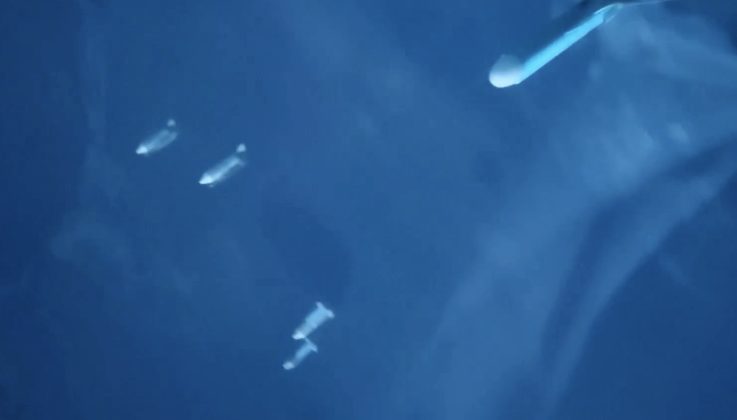News
New Footage Shows Su-34s Drop Thermobaric Glide Bombs on Ukrainian Forces: ’Vacuum’ Weapons Target Forces in Cover
Footage released by the Russian Defence Ministry on April 5 showed Su-34 strike fighters employing ODAB-500 500 kilogram glide bombs with thermobaric warheads against fortified Ukrainian positions in the disputed Donetsk region. Such warheads are well optimised for neutralising well fortified enemy positions, and function by dispersing a gaseous chemical clouds into the air which are then detonated by a vacuum explosive to release a high pressure shock wave. The effect is that air is sucked out of confined areas with tremendous force, destroying buildings, caves, trenches and other fortifications and rupturing the lungs of all present in the vicinity. Thermobaric rounds have been employed extensively on the frontlines from TOS-1 rocket artillery systems, with their deployment from guided glide bombs representing part of a broader trend of such bombs being used to supplement Russian forces’ already significant artillery superiority, and thereby provide a greater firepower advantage.

Russian ODAB-500 bombs are equipped with universal planning and correction modules with wing and rudder controls, allowing them to correct course during flight for greater accuracy. Despite the bombs’ high weights, the Su-34 has the highest endurance of any fighter class in the world today and can carry up to four per sortie without strain on the airframe. The Su-34 has been acquired in much greater numbers than any other post-Cold War fighter class in Russia, with production reported in 2023 to be further expanding. The increasingly widespread use of glide bombs had been highlighted with growing concern by Western and Ukrainian sources, with multiple Ukrainian personnel in January 2024 having informed the New York Times that a new Russian strikes using these bombs imposed “additional devastating power,” and with 500kg of explosives could thus obliterate their underground bunkers. One serviceman compared the impact of Russian glide bomb strikes to “hell’s gates,” stressing that the Russian Air Force “would send them two by two by two, eight in an hour… It sounds like a jet coming down on you.” The use of thermobaric warheads has reportedly made Su-34 sorties significantly more lethal still when targeting fortified positions, with this kind of ammunition having been widely likened in Russia to flamethrowers for their special function clearing trenches and bunkers.












